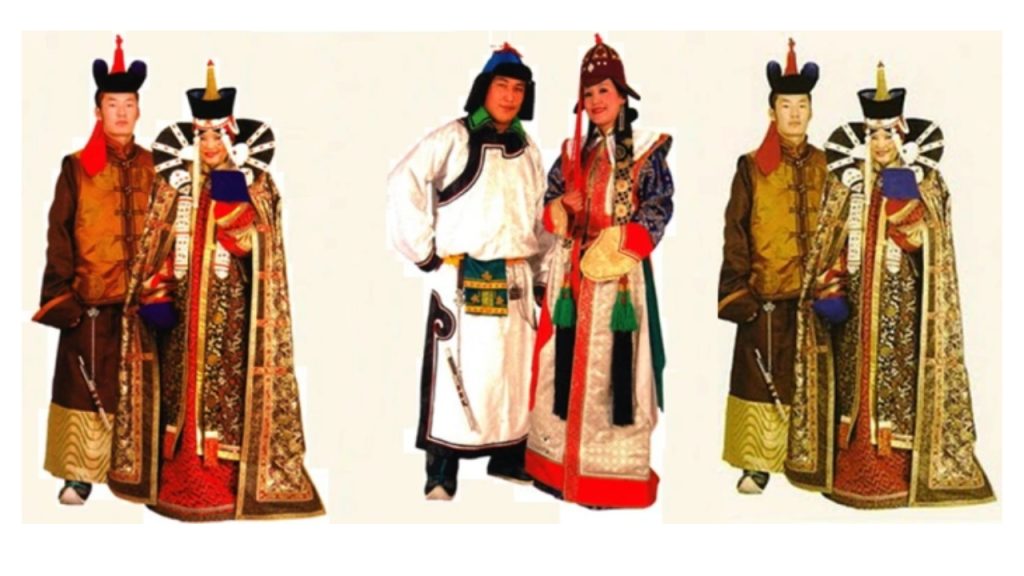Mongolian Traditional Clothes
The distinctive culture and customs of ethnic groups are represented and valuably expressed via traditional dress. Each culture has different clothing based on rank, age, and gender.

Mongolian Hat
The most significant article of clothing in Mongolia is the hat, which symbolizes the wearer’s rank. Never do Mongolians pass their hat to another person or discard it on the ground. Over 200 distinct types of traditional hats are used in Mongolia. Hats vary according to the seasons, gender, status, and age. Hat must always be worn upright and must be positioned over belt and other apparel. A hat should always be worn during official ceremonies and celebrations. The Mongolian people place a high value on hats and belts because they think that they contain a man’s character.
Mongolian Deel
The Mongolian deel is designed to safeguard health from the harsh steppe climate and is tailored to the nomadic people’s bodies and everyday routines. For instance, long sleeves can be used as padding when carrying objects and as gloves in cold weather. To shield the kidney and back from the elements and any collision, belts are long and broad. During long journeys, Deel can be used as a blanket.
Mongolian Belt
According to their theories, a person’s spirit may be found in their belt, hat, knife, and tinder-flint. A belt may serve as a symbol of a person’s wealth and rank, and depending on the status, it may be made of silk, leather, cloth, gold, or silver. Ancient nomadic empires’ nobles wore exquisitely crafted belts composed of gold, silver, and other precious metals that were set with jewels. In the past, Mongolians would trade belts with their closest friends as a symbol of unwavering friendship. Men shouldn’t wear belts made for ladies. An old belt is burnt and cleaned with fire rather than being thrown in the trash. A person shouldn’t tread on or walk over another person’s belt.
Mongolian Boots
Long leather boots with concave soles were originally worn by Mongolians. Typically, it is brightly adorned. In Mongolia, there are approximately 20 different ethnic groups, each with its own distinct culture and customs. Boots are no different from the distinctive clothes worn by these groups. The variations in Mongolian boots depend on the amount of ornamental patterns, which range from 8 to 32. The purpose of the upturned sole is to prevent digging up the ground when walking. Mongolian boots might be considered among the greenest footwear options.
Accessories of Mongolian clothing
Silver, copper, and gold are used as ornaments in Mongolia, while silver and copper are favoured owing to their health advantages. Men used to travel with a knife, tinderbox, steel, snuff bottle, silk bag, personal cup, and chopsticks.Silver is mostly used to adorn them. One of a person’s most valued things is a silver cup. Except in the tribes of the Buriat and Myangad, women do not wear accessories. When they ride horses, they also wear varois accessories like leather skirt fasteners embellished with silver. These accessories serve as masterworks by Mongolian jewelers and goldsmiths.




